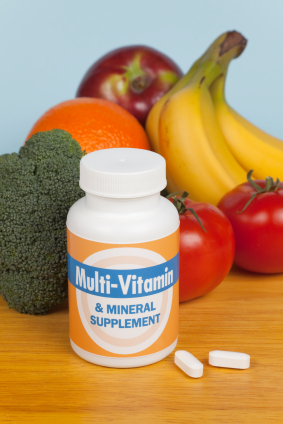Fat Soluble Vitamins
Fat Soluble Vitamins
By: Dr. George Obikoya
The four fat (lipid) soluble vitamin groups are vitamins A, D, E, and K and are all related structurally. Each of the lipid-soluble vitamin groups contains several related biological active compounds. The potency of the active forms in each group of these vitamins varies, and not all of the active forms now known are available from dietary sources - some are produced synthetically.
Of the about ten carotenes, colored molecules synthesized only in plants, that show vitamin A activity, only the alpha- and beta-carotenes and cryptoxanthin are important to human beings, and of those, beta-carotene is the most active. Retinol (vitamin A alcohol) is considered the primary active form of this vitamin, although retinal is the form involved in the visual process in the retina of the eye.
Although about 10 substances have fat soluble vitamin D activity, vitamins D2 (or ergocalciferol) and D3 (or cholecalciferol) are the two most significant to us. Vitamin D3 is found in our diet, while vitamin D2 occurs in yeasts and fungi. Both can be formed from their respective provitamins by ultraviolet irradiation; in man the provitamin (7-dehydrocholesterol), which is found in skin, can be converted by sunlight to vitamin D3 and thus is an important source of the vitamin. We can utilize both vitamins D2 and D3.
The tocopherols, which are otherwise called the Vitamin E group are a closely related group of biologically active compounds. The active tocopherols are named in order of their potency. Thus, alpha-tocopherol is the most active. The vitamin A group is important for our vision. In the retina of the eye, retinal is combined with a protein called opsin resulting in the formation of complex molecules known as rhodopsin (visual purple), which is involved in dark vision. Also, the skin, eyes and mucous membranes of the mouth, nose, throat and lungs depend on vitamin A to remain moist. Night blindness and very dry, rough skin may indicate a lack of vitamin A. A deficiency of the A vitamins may also lead to decreased resistance to infections, poor tooth development, and slower bone growth.
The group known as the D vitamins are required for growth, especially bone growth or "calcification". Vitamin D plays a critical role in the body's use of calcium and phosphorous. It increases the amount of calcium absorbed from the small intestine and helps form and maintain bones. Children in particular need adequate amounts of vitamin D to develop strong bones and healthy teeth. Symptoms of vitamin D deficiency in growing children include rickets (long, soft bowed legs) and flattening of the back of the skull. Vitamin D deficiency in adults is called osteomalacia, which leads to muscular weakness and weak bones.
The vitamin E group is also necessary for normal growth. Vitamin E acts as an antioxidant, protecting vitamins A and C, red blood cells and essential fatty acids from destruction. Taking antioxidant supplements, vitamin E in particular, might help prevent heart disease and cancer.
The K vitamins are needed for normal metabolism, including the conversion of food into cellular energy. Vitamin K also is necessary for the proper clotting of blood and helps promote bone health. Without sufficient amounts of vitamin K, hemorrhaging can occur. Newborn babies lack the intestinal bacteria to produce vitamin K and need a supplement for the first week.
Individuals on anticoagulant drugs (blood thinners) may become deficient in vitamin K as may those taking antibiotics, even if temporarily because intestinal bacteria populations are sometimes reduced by the long-term use of antibiotics. Also, people with chronic diarrhea may be unable to absorb enough vitamin K through the intestine. These groups of people need to take additional Vitamin K to ensure a proper level in the body.
A good multivitamin is the foundation of health and nutrition. Take a look at our scientific reviews of many of the popular brands for factors such as ingredients, areas of improvement, quality level, and overall value. If you are looking for a high quality liquid multivitamin, we suggest that you take a look at the Multivitamin Product Comparisons.

